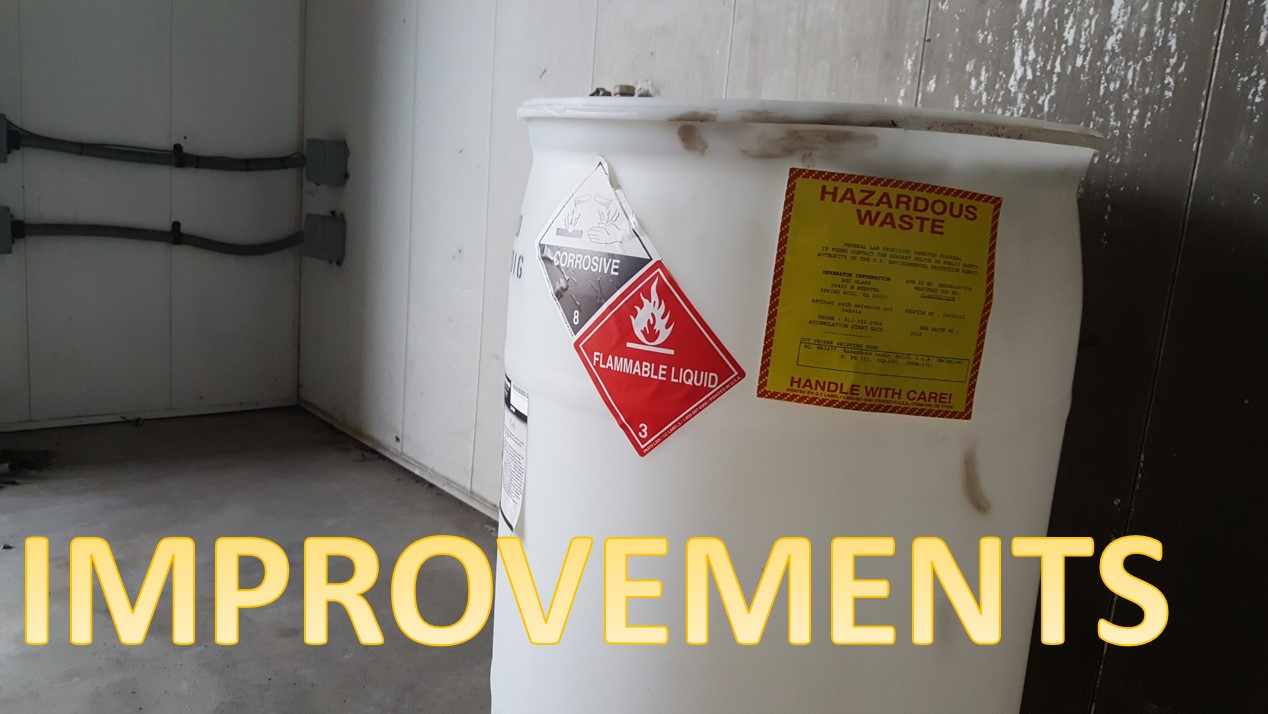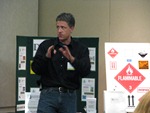Federal regulations of the U.S. Environmental Protection Agency (USEPA) at 40 CFR 262.17(a)(6) require a large quantity generator of hazardous waste (LQG) to comply with the preparedness, prevention, and emergency procedure standards of 40 CFR 262, subpart M. This article is the eleventh in a series that looks closely at each of the sections in subpart M to clearly describe the responsibilities of a LQG.
The purpose of this article is to address the requirements of 40 CFR 262.263 Amendment of contingency plan.
Before we begin…
These regulations were revised by the Generator Improvements Rule. If your state has not yet adopted the new rule you must continue to comply with the earlier version until it does. You may read an article explaining the earlier version of the regulations (prior to implementation of the Generator Improvements Rule) here.
Not sure of your hazardous waste generator status? |
Scope and Applicability:
These regulations are applicable to a LQG. A small quantity generator of hazardous waste (SQG) is subject to entirely different requirements for emergency response. If you are a SQG please refer to this article for your version of these regulations: Preparedness, Prevention, and Emergency Procedures for Small Quantity Generator of Hazardous Waste.
As made clear by §262.250 (revised by the Generator Improvements Rule), the preparedness, prevention, and emergency procedures of Subpart M are applicable to those areas of a LQG where hazardous waste is generated or accumulated. This includes:
- Central Accumulation Area (CAA)
- Satellite Accumulation Area (SAA)
Read: Applicability of Preparedness, Prevention, and Emergency Procedures for LQG
40 CFR 262.263 reads:
The contingency plan must be reviewed, and immediately amended, if necessary, whenever:
(a) Applicable regulations are revised;
(b) The plan fails in an emergency;
(c) The generator facility changes—in its design, construction, operation, maintenance, or other circumstances—in a way that materially increases the potential for fires, explosions, or releases of hazardous waste or hazardous waste constituents, or changes the response necessary in an emergency;
(d) The list of emergency coordinators changes; or
(e) The list of emergency equipment changes.
Daniels Training Services, Inc. 815.821.1550 |
Why the change?
No change, really. Just the addition of the word “generator” before “facility” in §262.263(c) to emphasize the applicability of these regulations solely to a large quantity generator of hazardous waste (LQG).
Annual Review of Contingency Plan:
Nope. Nowhere do the Federal regulations of the USEPA require an annual review of the contingency plan or a review at any frequency – your state may be more stringent and require regular review.
Review and Amend Contingency Plan:
There are five (5) conditions that require a review and immediate amendment, if necessary, to the contingency plan:
- Applicable regulations are revised. As some – not all – of them were by the Generator Improvements Rule which went into effect May 30, 2017. Note that this is not limited to changes to the Federal regulations of the Resource Conservation and Recovery Act (RCRA). It is possible that other regulations of the USEPA (e.g., those under the Clean Water Act or Clean Air Act) or those of OSHA or USDOT are applicable to a LQG’s contingency plan. Applicable regulations may be also be those of your state. A state with an authorized hazardous waste program may have more stringent and/or more broad requirements than those of the USEPA.
- The plan fails in an emergency. A failure could be any time the emergency procedures of §262.265 as documented in the contingency plan do not achieve the desired result when enacted.
- Any of the following changes to the facility that materially increases the risk of a hazardous waste emergency or changes the LQG’s emergency response:
- Design
- Construction
- Operations
- Maintenance
- Other circumstances
Thankfully, review and amendment of the contingency plan is not required for any change to the facility. Just the identified changes that do one of the following:
- Substantially (aka: materially) increase the risk posed by a hazardous waste emergency.
- Change the way the LQG will respond to an emergency.
- Change to emergency coordinators. A good reason to take advantage of new regulations at §262.261(d) that allow for the identification of emergency coordinators by job title instead of by name.
- Change to list of emergency equipment. This is the required equipment of §262.252. It must be included in the contingency plan pursuant to §262.261(e).
Contact me the next time hazardous waste generator USEPA training is due to expire. |
And then what?
If amendments are made to the contingency plan the LQG must then undertake the following pursuant to §262.262:
- Maintain the amended copy of the contingency plan at the site of the LQGs operations. It is not necessary to retain past contingency plans reflecting out of date information.
- Submit the amended copy (or just the revised pages with directions on how to insert into the master document) to all local emergency responders.
- Submit an updated quick reference guide, if necessary, to all local emergency responders.
Is that it?
No. First of all, as a LQG you must still comply with the remaining requirements of §262, subpart M which have been moved from their former location at §265, subpart D and were revised by the Generator Improvements Rule.
And then, what about training? At §262.17(b)(7) – directly following the referral to emergency procedures – are the training requirements for a LQG. §262.17(b)(7)(i)(C) reads in part:
At a minimum, the training program must be designed to ensure that facility personnel are able to respond effectively to emergencies…
So clearly, Hazardous Waste Personnel Training at a LQG is important.


